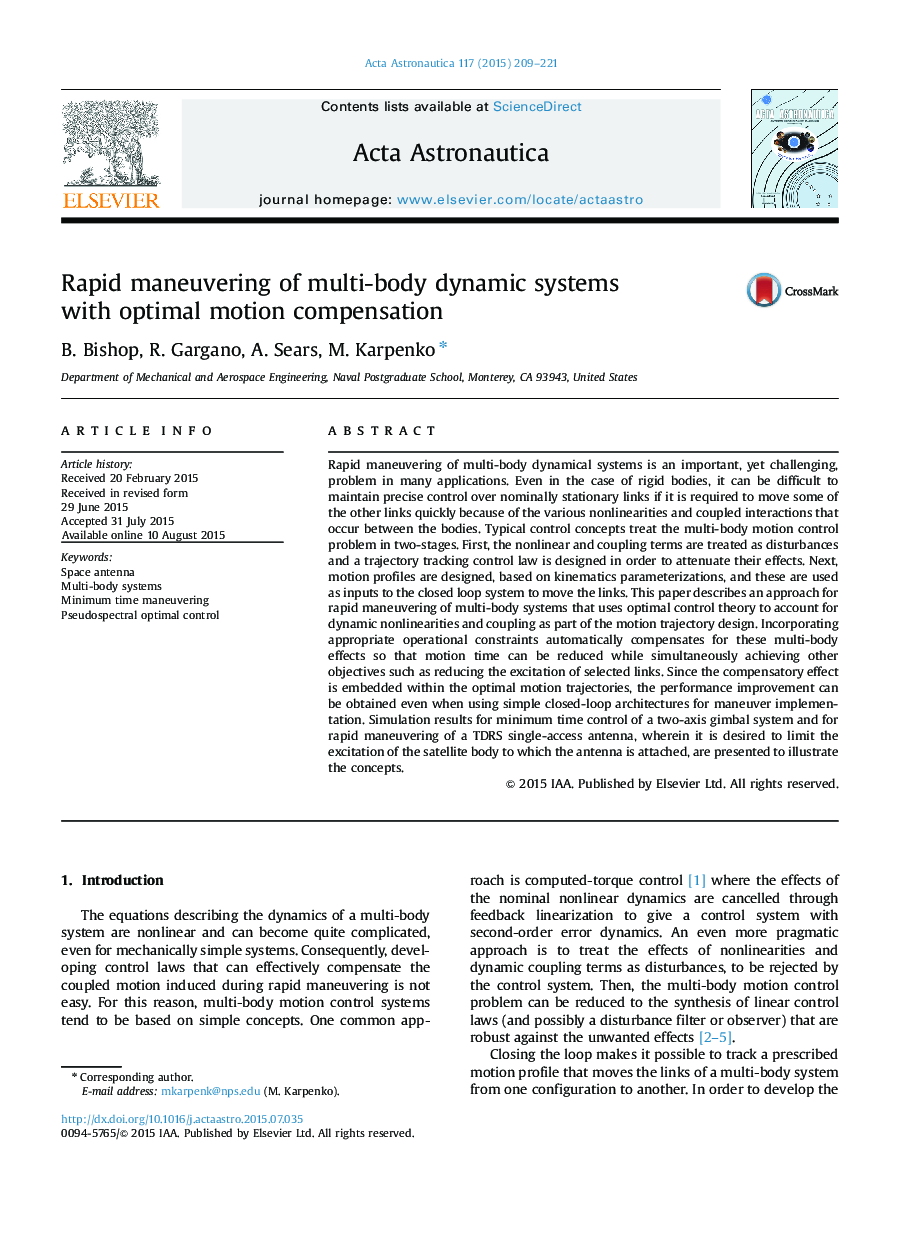| کد مقاله | کد نشریه | سال انتشار | مقاله انگلیسی | نسخه تمام متن |
|---|---|---|---|---|
| 1714335 | 1519937 | 2015 | 13 صفحه PDF | دانلود رایگان |
• Pseudospectral optimal control theory is applied for rapid maneuvering of multi-body systems.
• Problem constraints are found to be crucial for managing disturbances induced between bodies.
• Optimal motion compensation is naturally embedded in the dynamics-based optimal control solutions.
• Performance improvement can be realized using simple feedback architectures to implement the optimal motion profiles.
• Rapid maneuvering of a two-axis gimbal and TDRS single-access antenna illustrate the concepts.
Rapid maneuvering of multi-body dynamical systems is an important, yet challenging, problem in many applications. Even in the case of rigid bodies, it can be difficult to maintain precise control over nominally stationary links if it is required to move some of the other links quickly because of the various nonlinearities and coupled interactions that occur between the bodies. Typical control concepts treat the multi-body motion control problem in two-stages. First, the nonlinear and coupling terms are treated as disturbances and a trajectory tracking control law is designed in order to attenuate their effects. Next, motion profiles are designed, based on kinematics parameterizations, and these are used as inputs to the closed loop system to move the links. This paper describes an approach for rapid maneuvering of multi-body systems that uses optimal control theory to account for dynamic nonlinearities and coupling as part of the motion trajectory design. Incorporating appropriate operational constraints automatically compensates for these multi-body effects so that motion time can be reduced while simultaneously achieving other objectives such as reducing the excitation of selected links. Since the compensatory effect is embedded within the optimal motion trajectories, the performance improvement can be obtained even when using simple closed-loop architectures for maneuver implementation. Simulation results for minimum time control of a two-axis gimbal system and for rapid maneuvering of a TDRS single-access antenna, wherein it is desired to limit the excitation of the satellite body to which the antenna is attached, are presented to illustrate the concepts.
Journal: Acta Astronautica - Volume 117, December 2015, Pages 209–221
